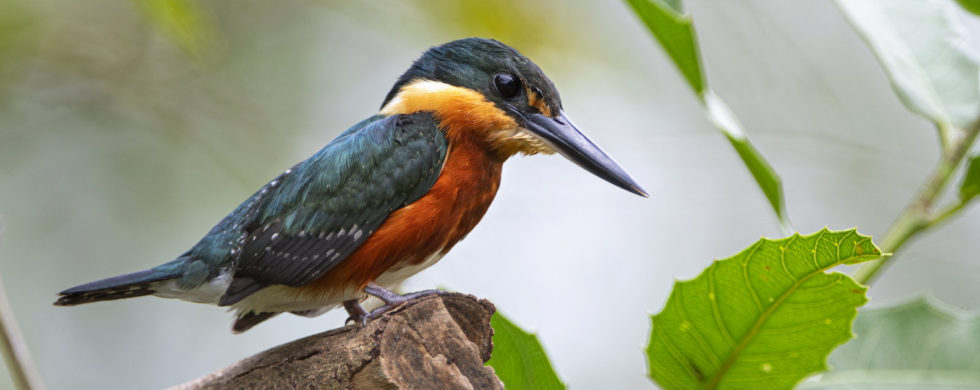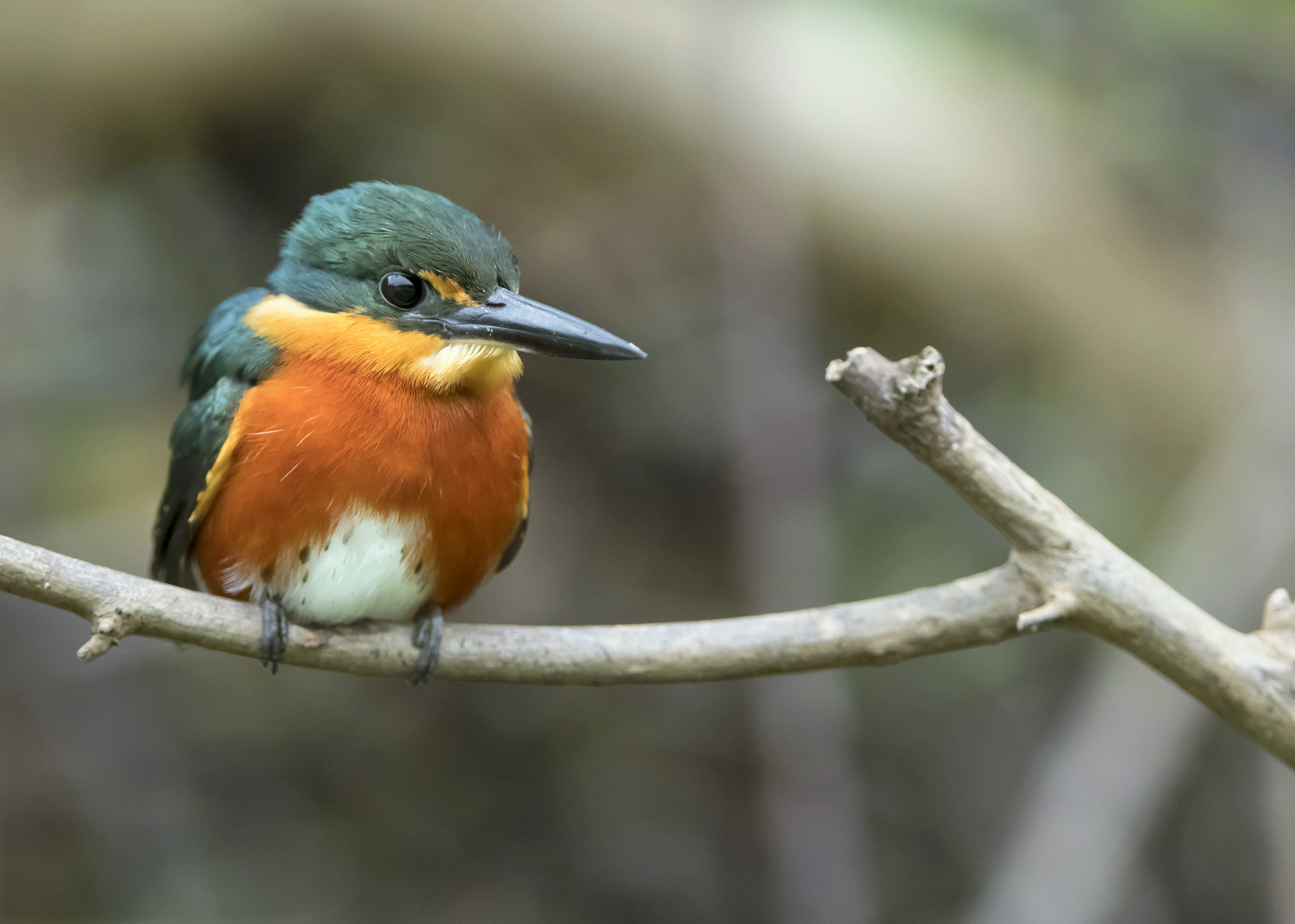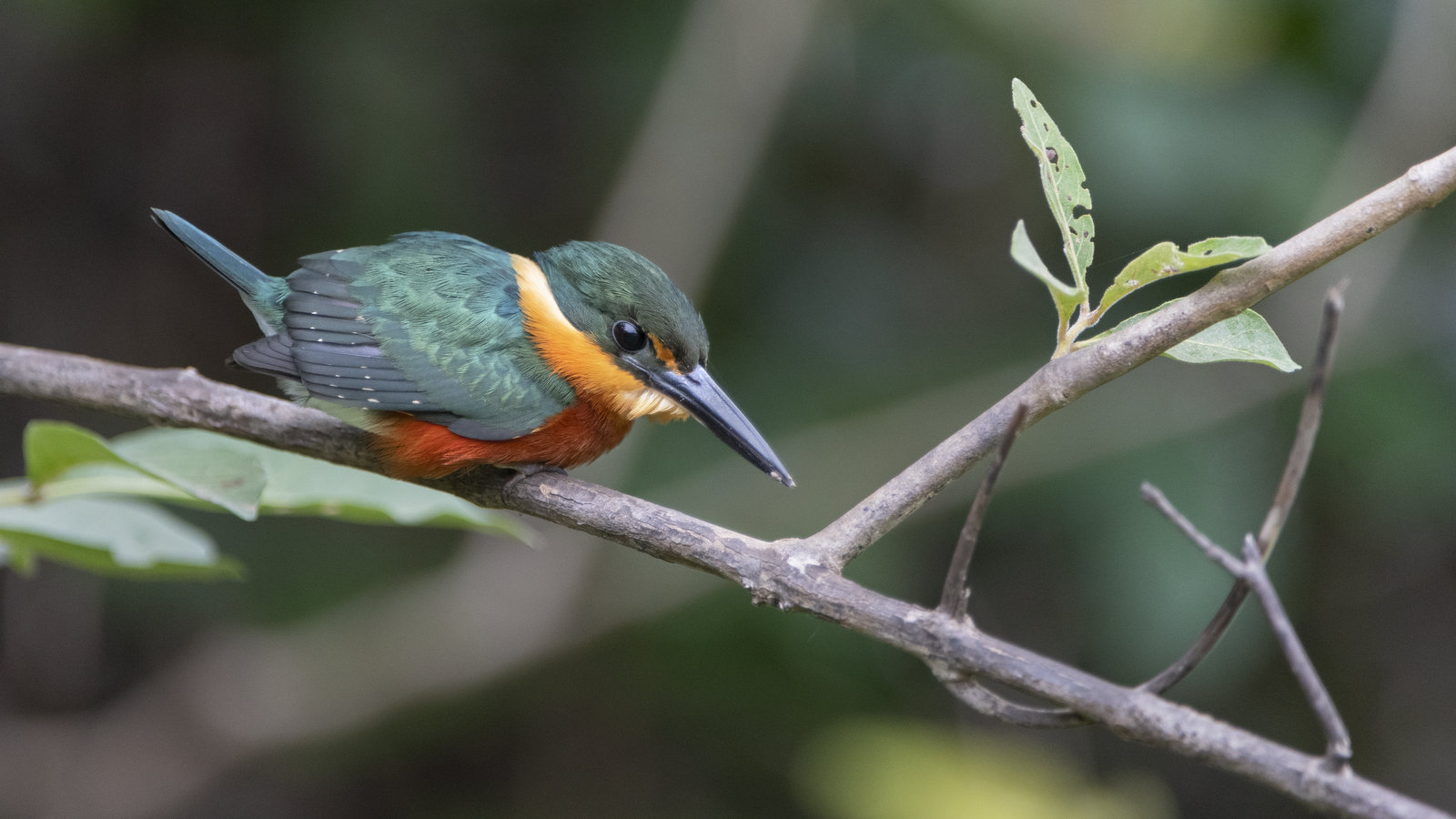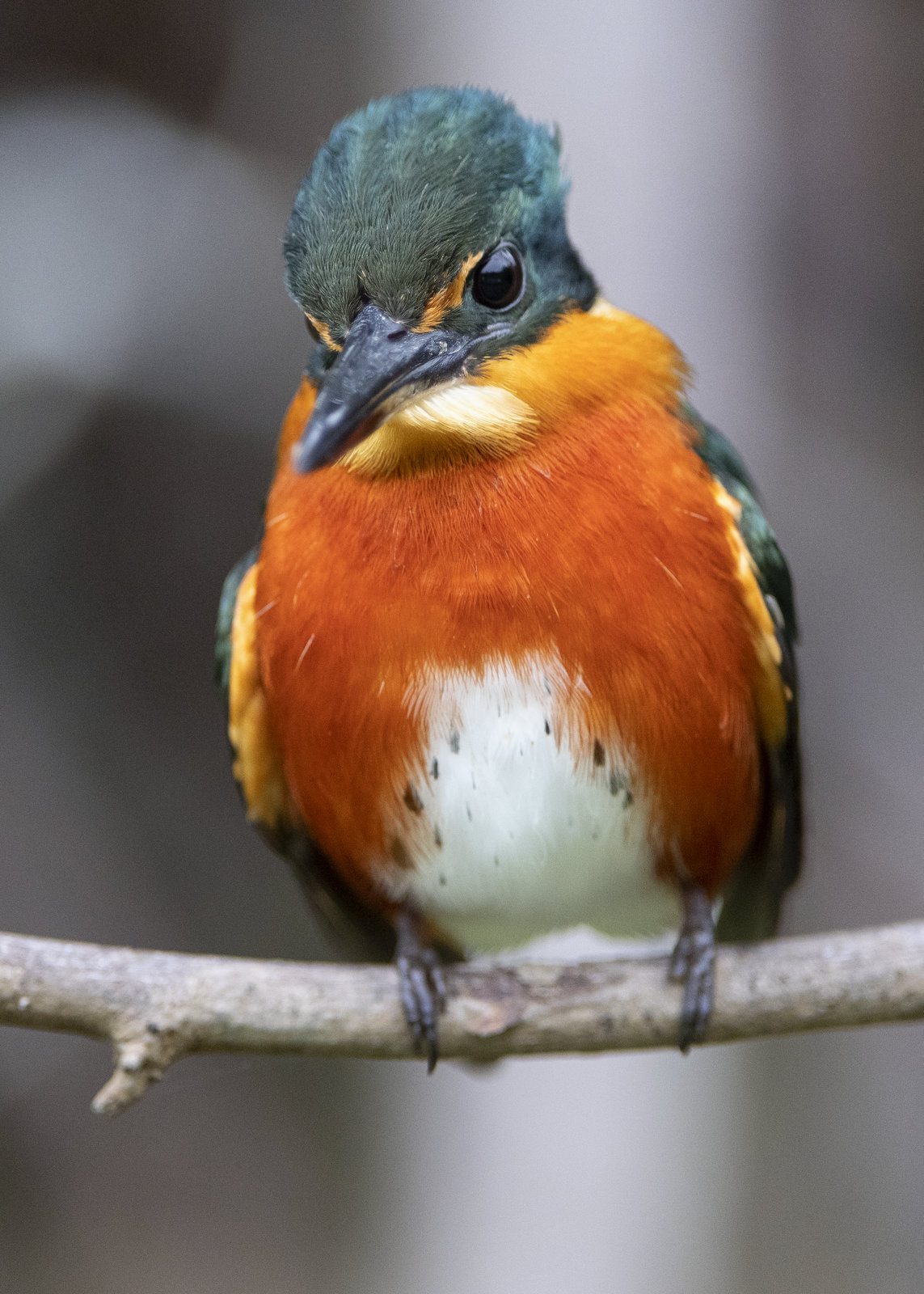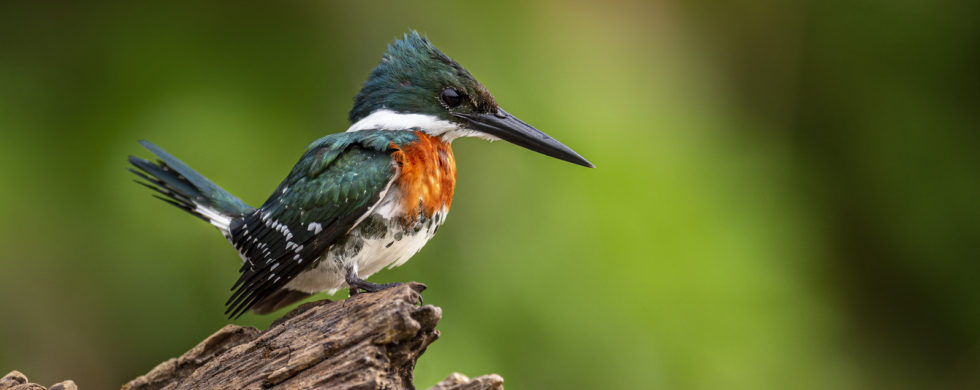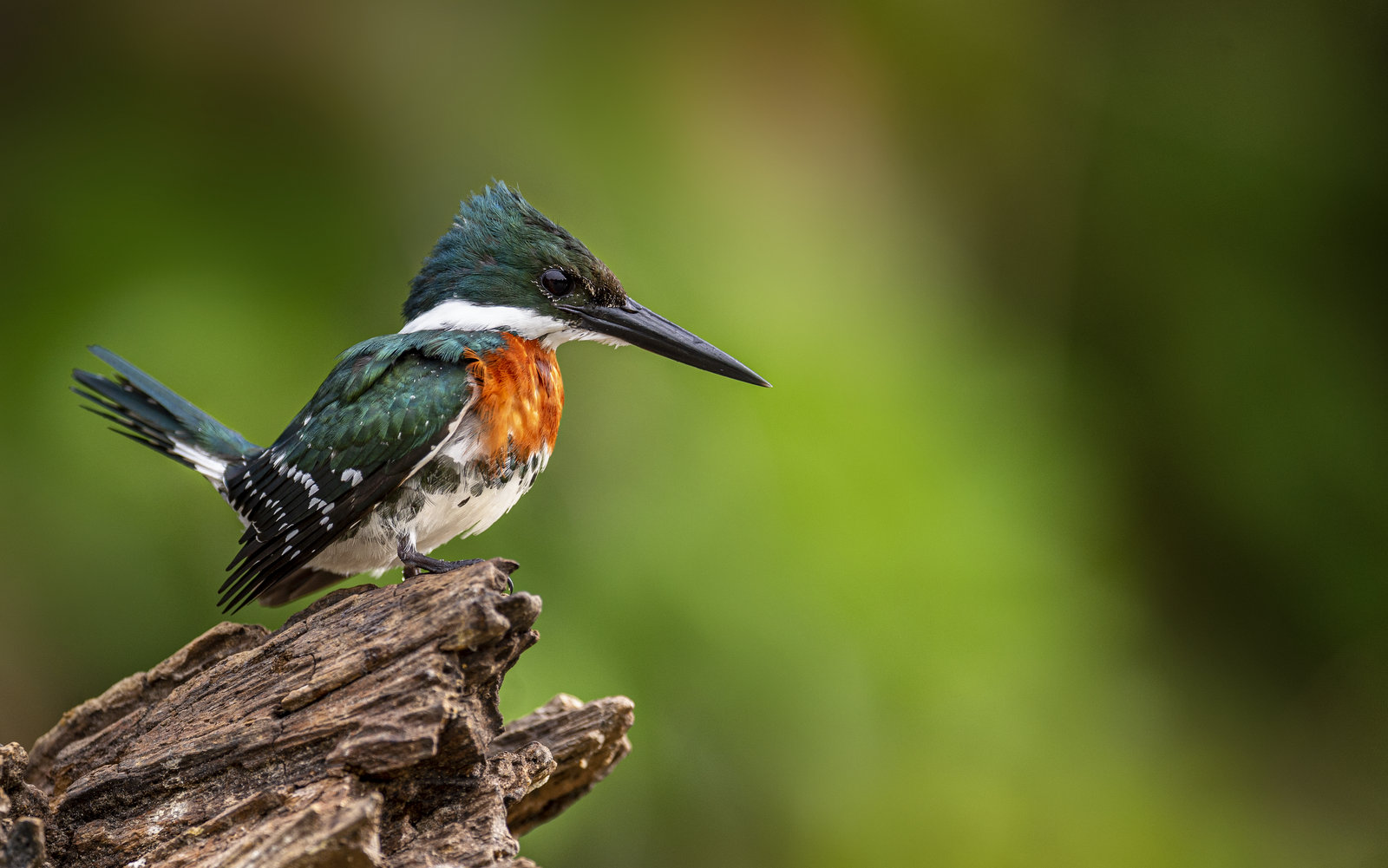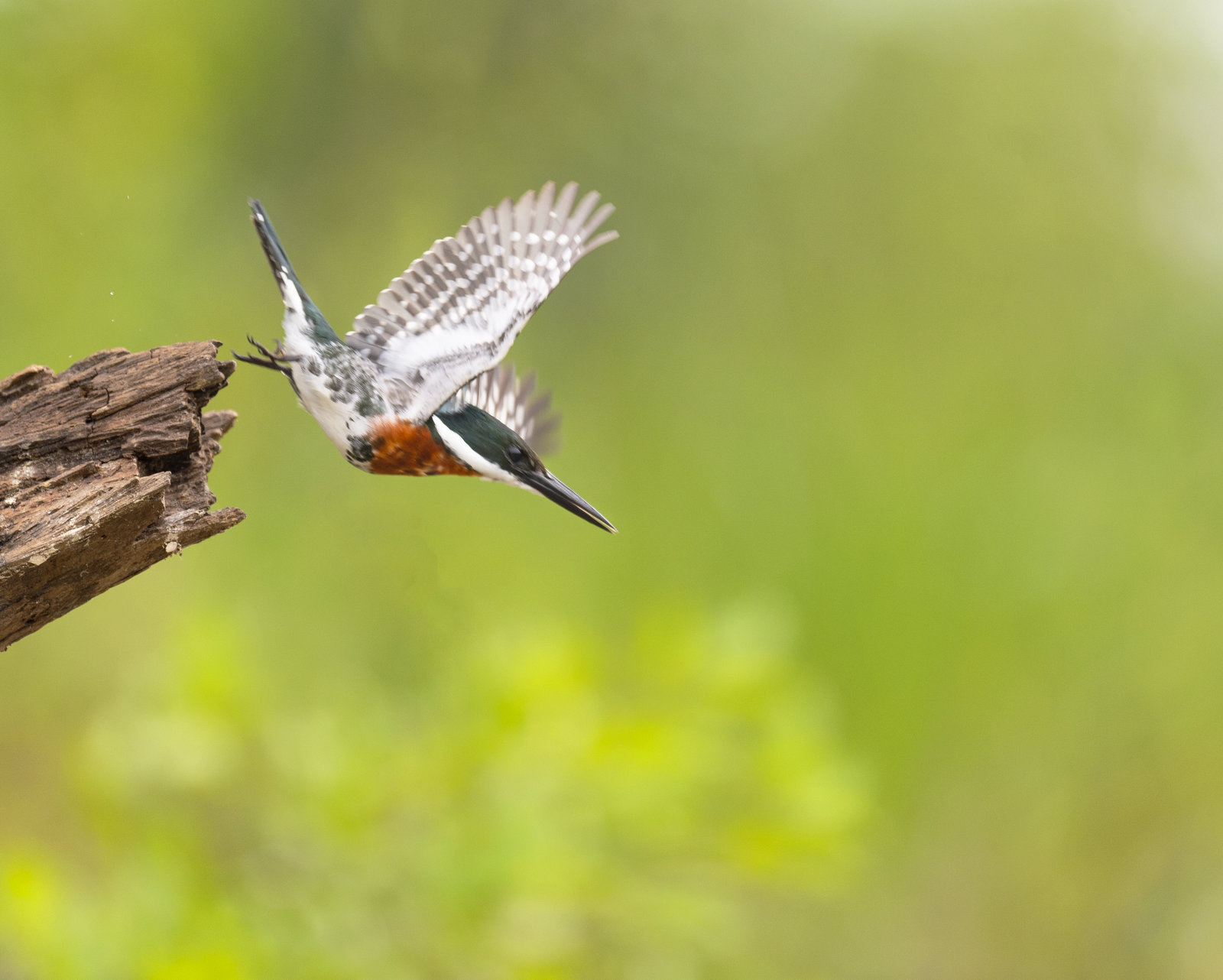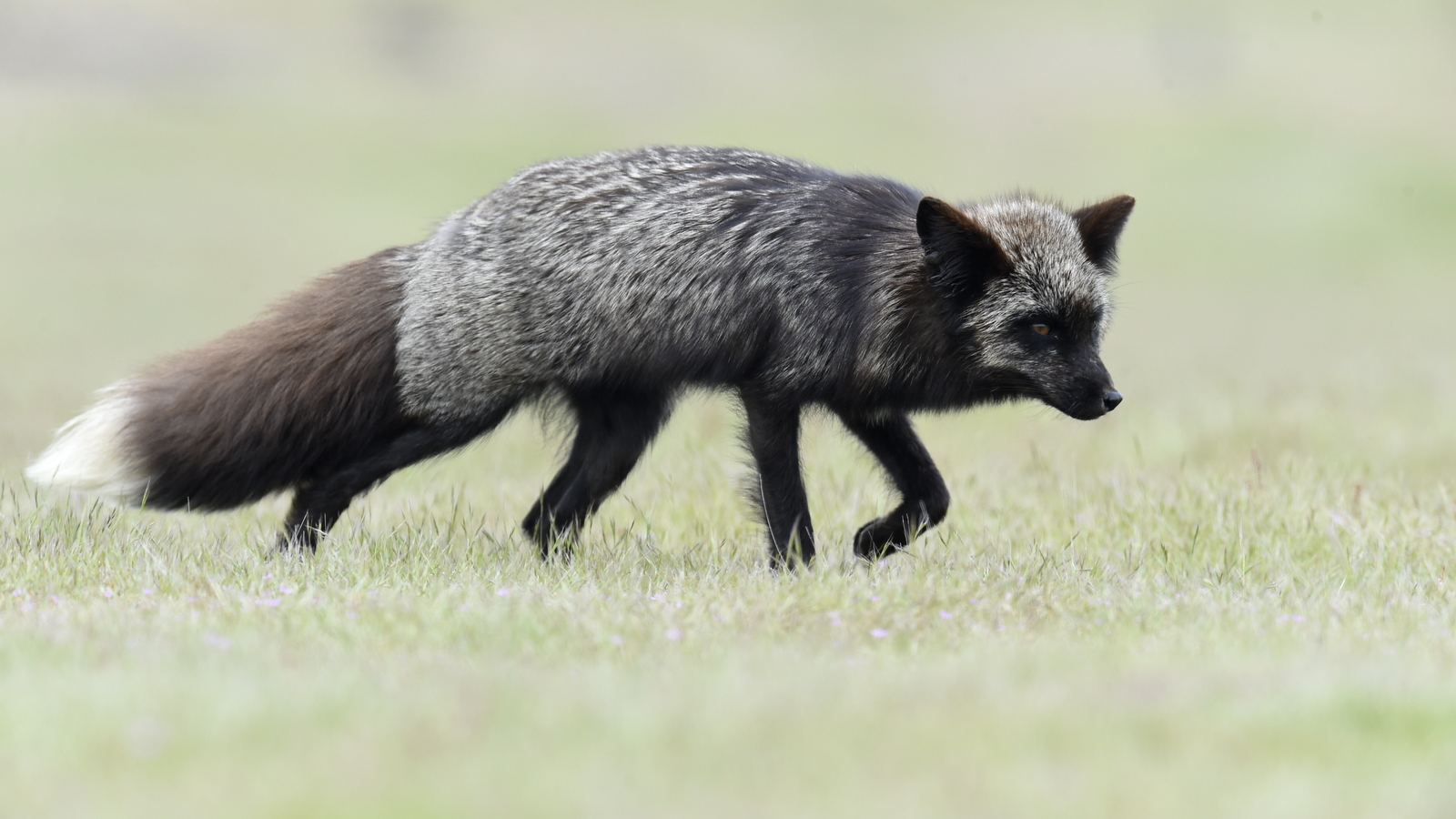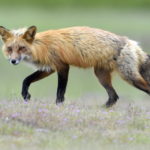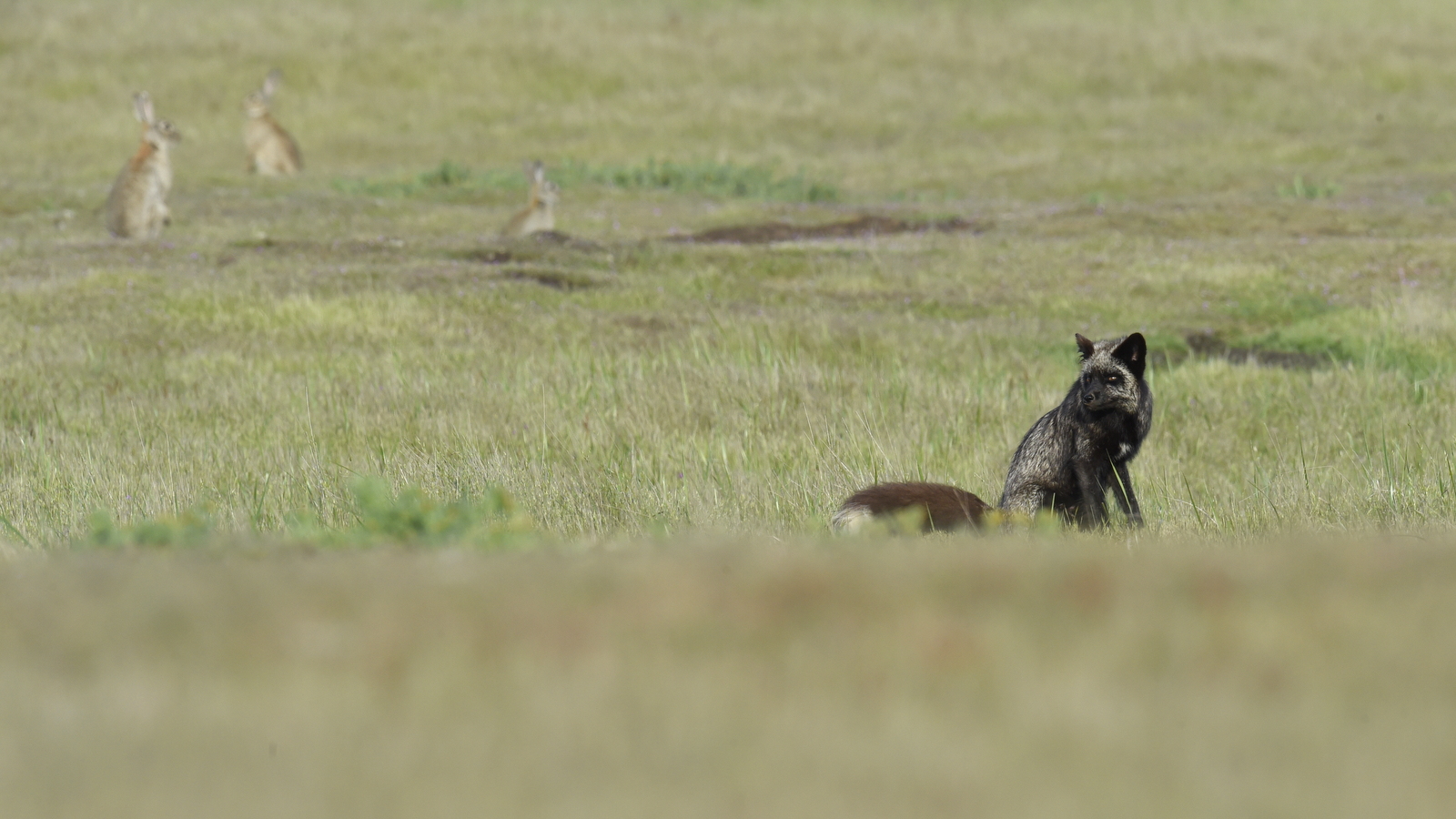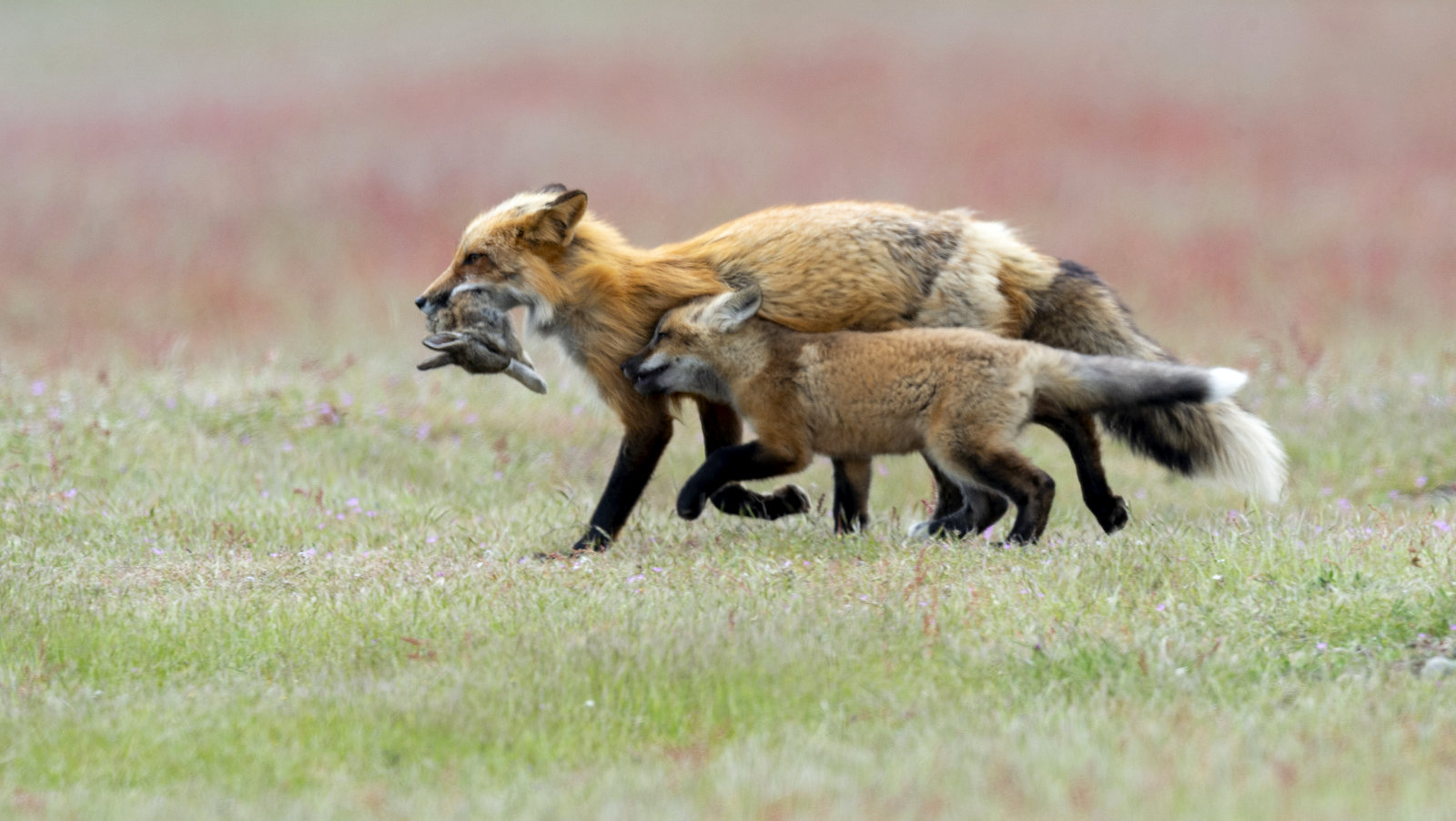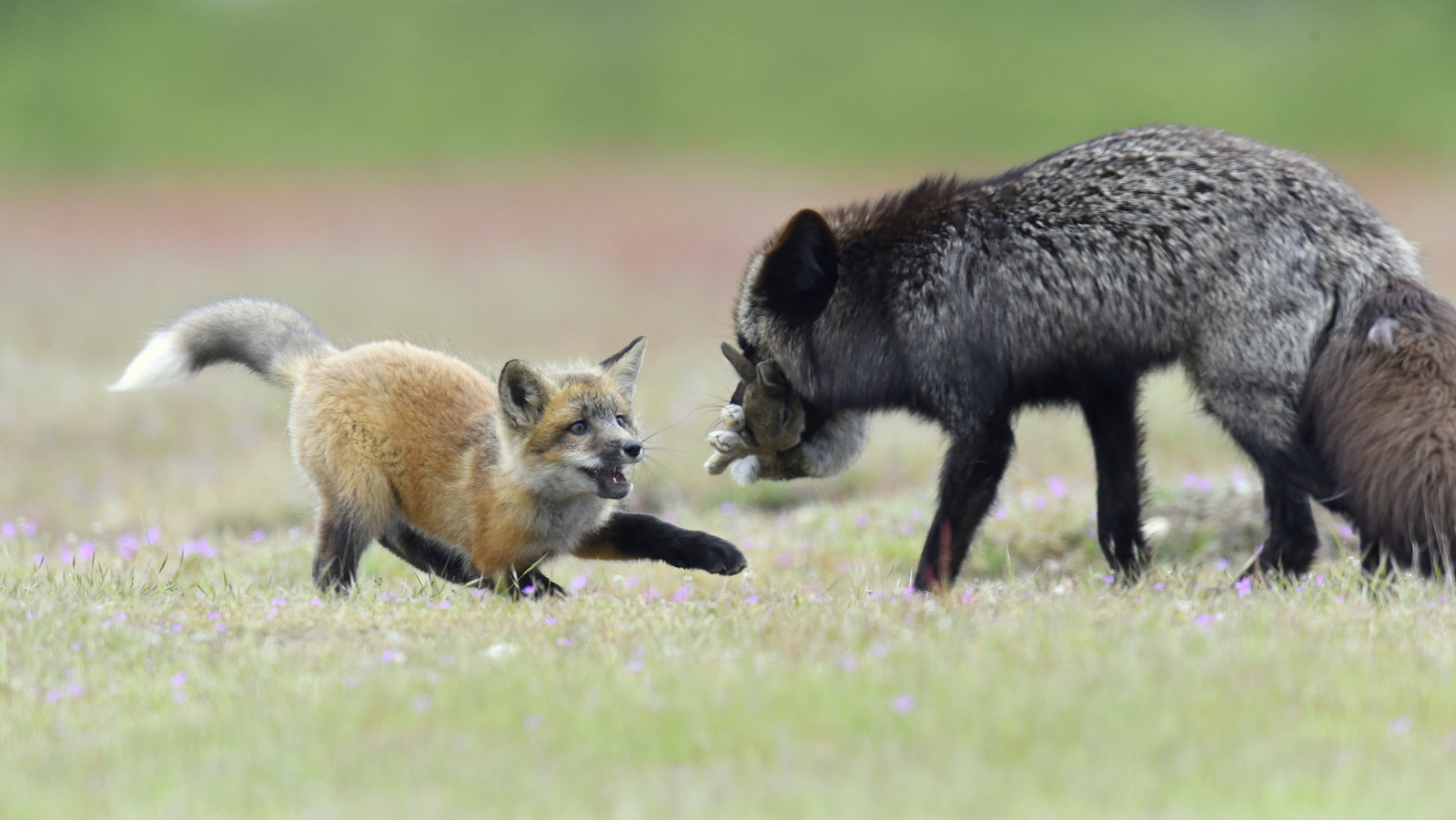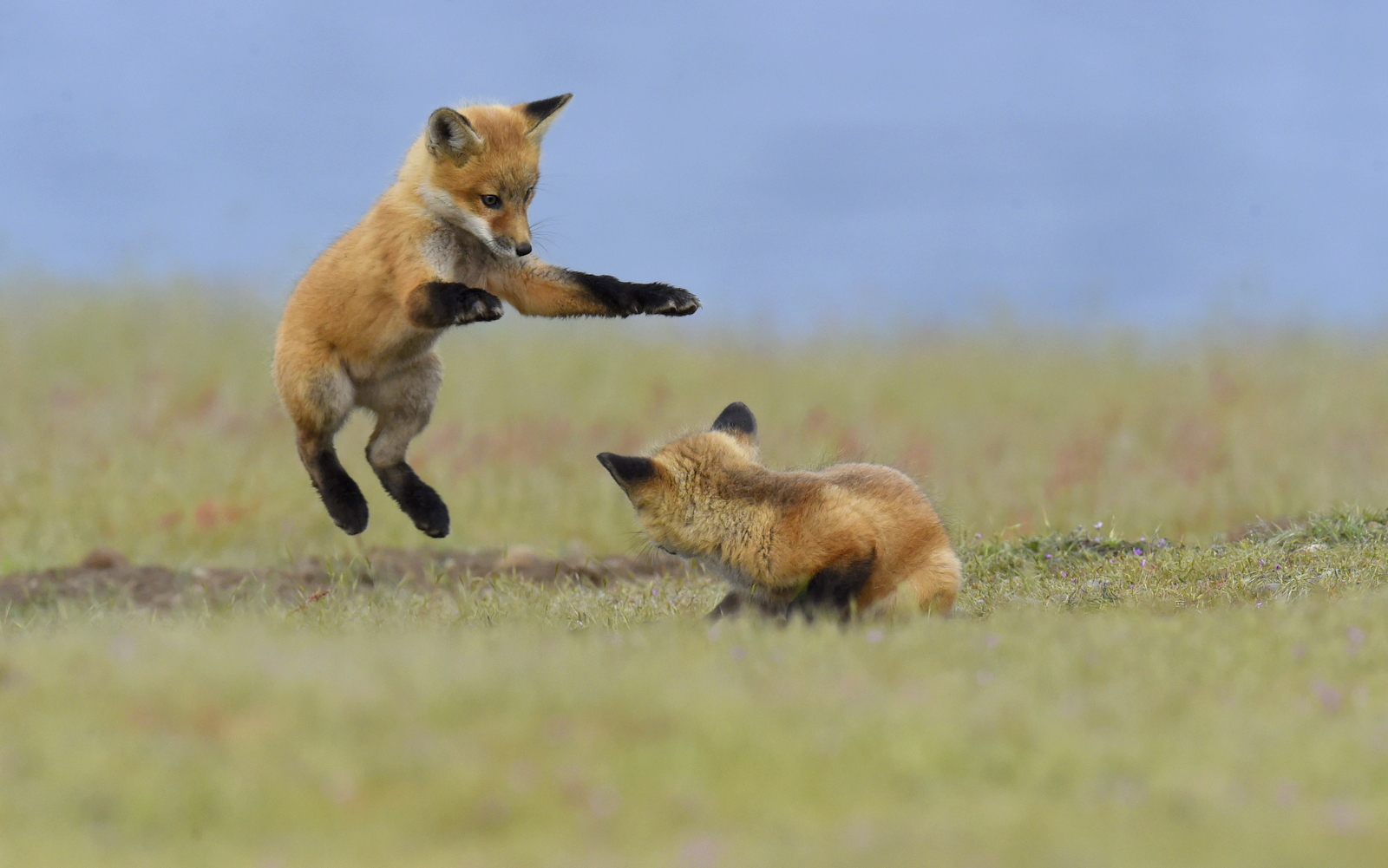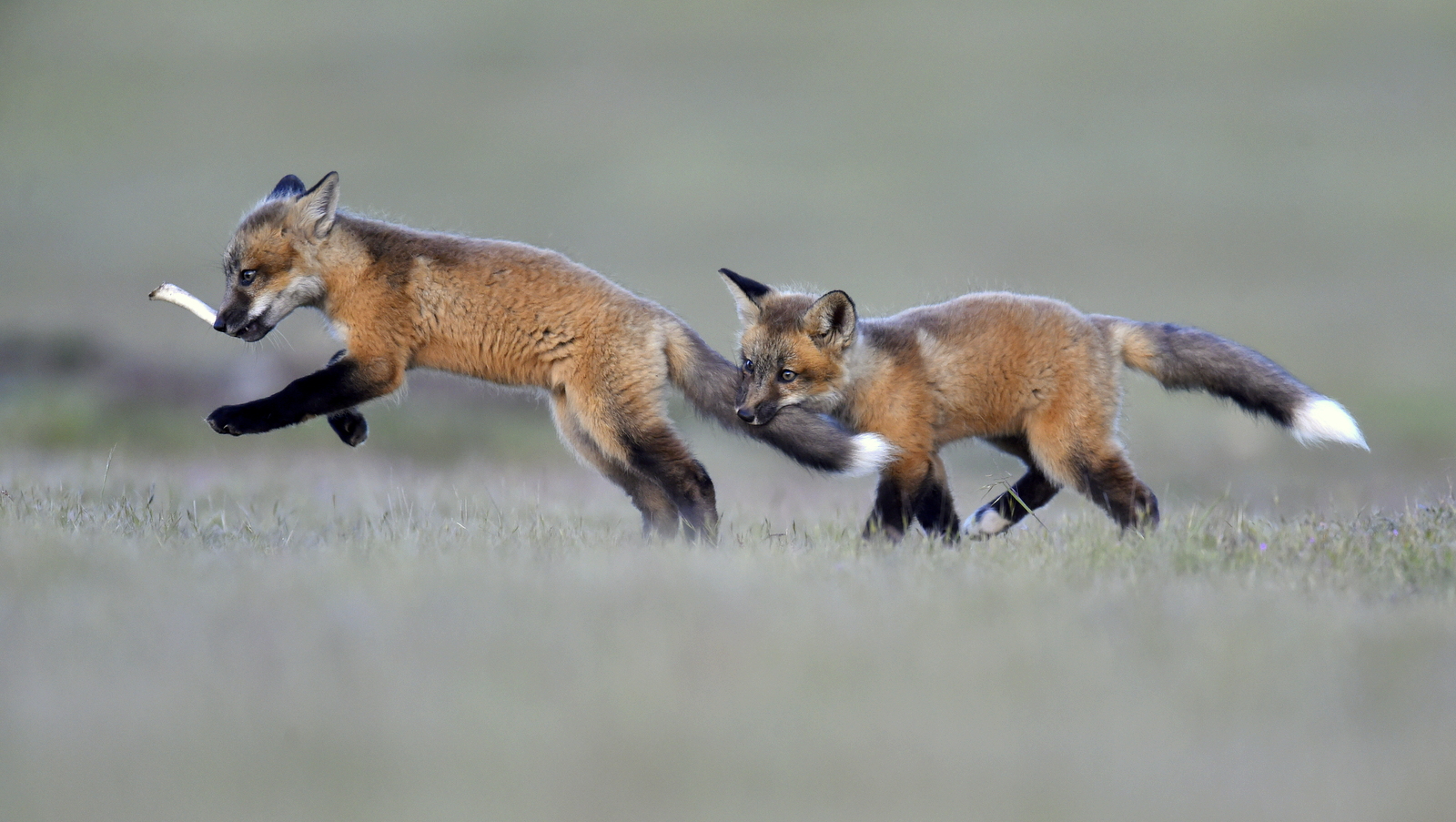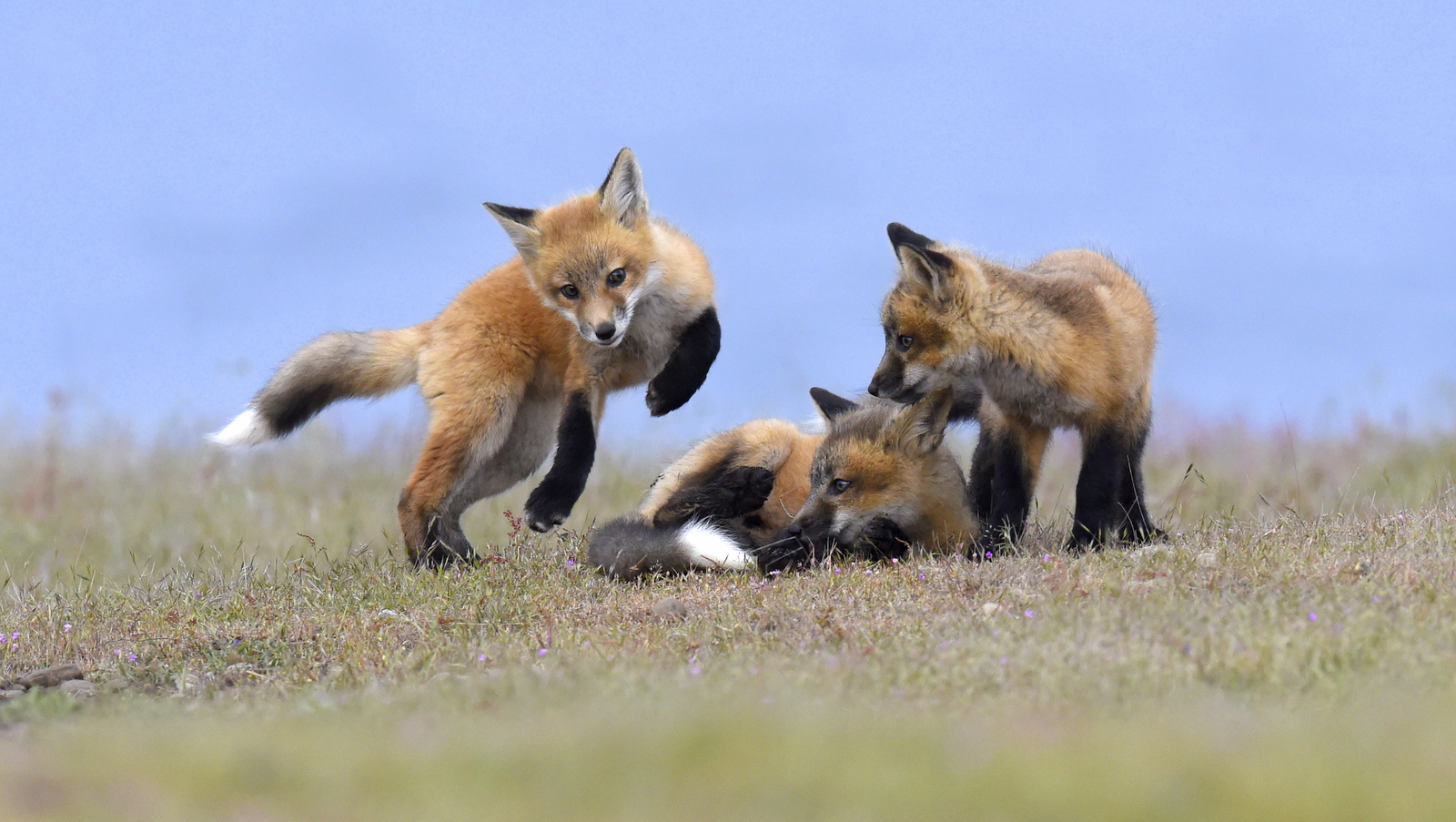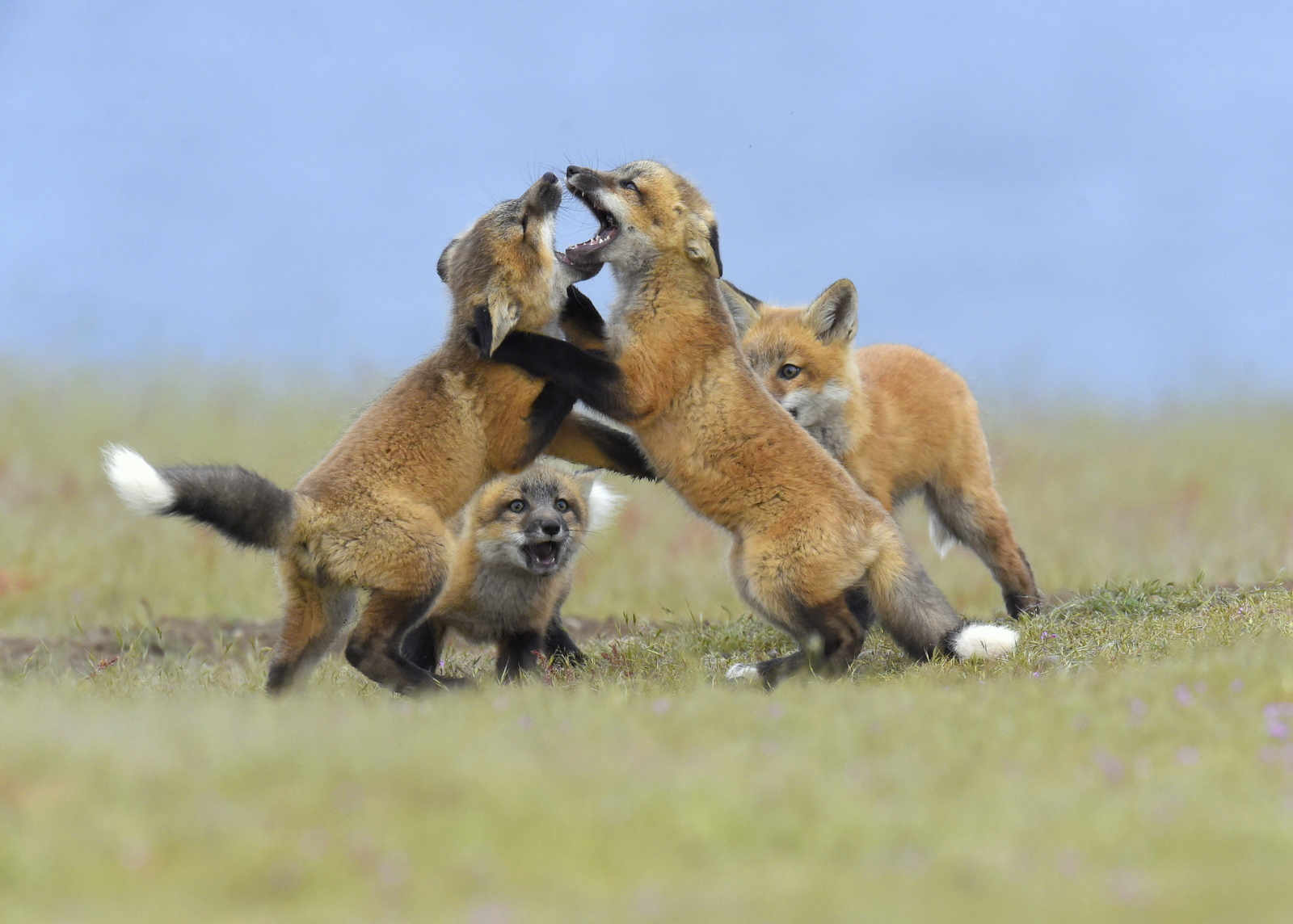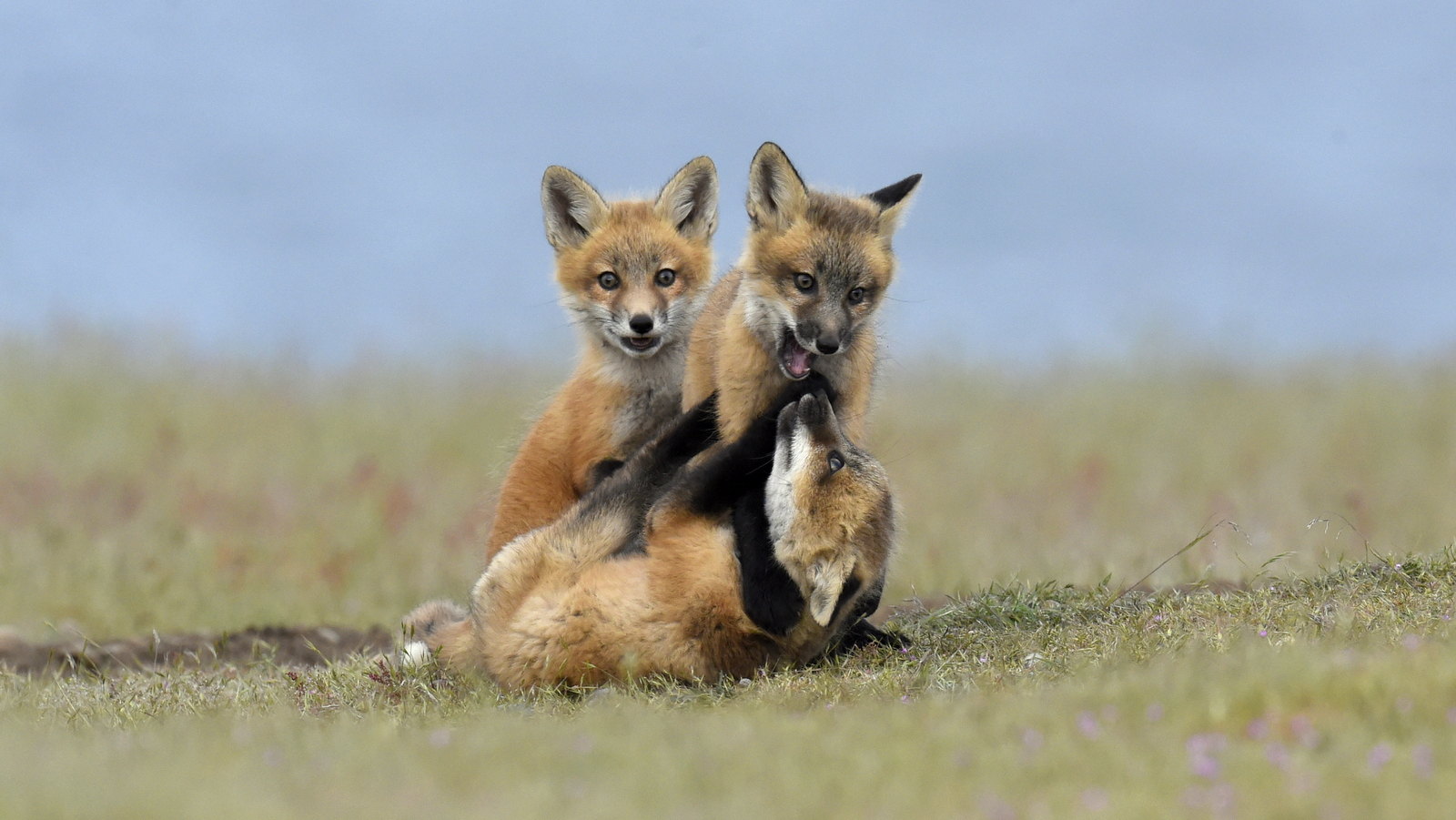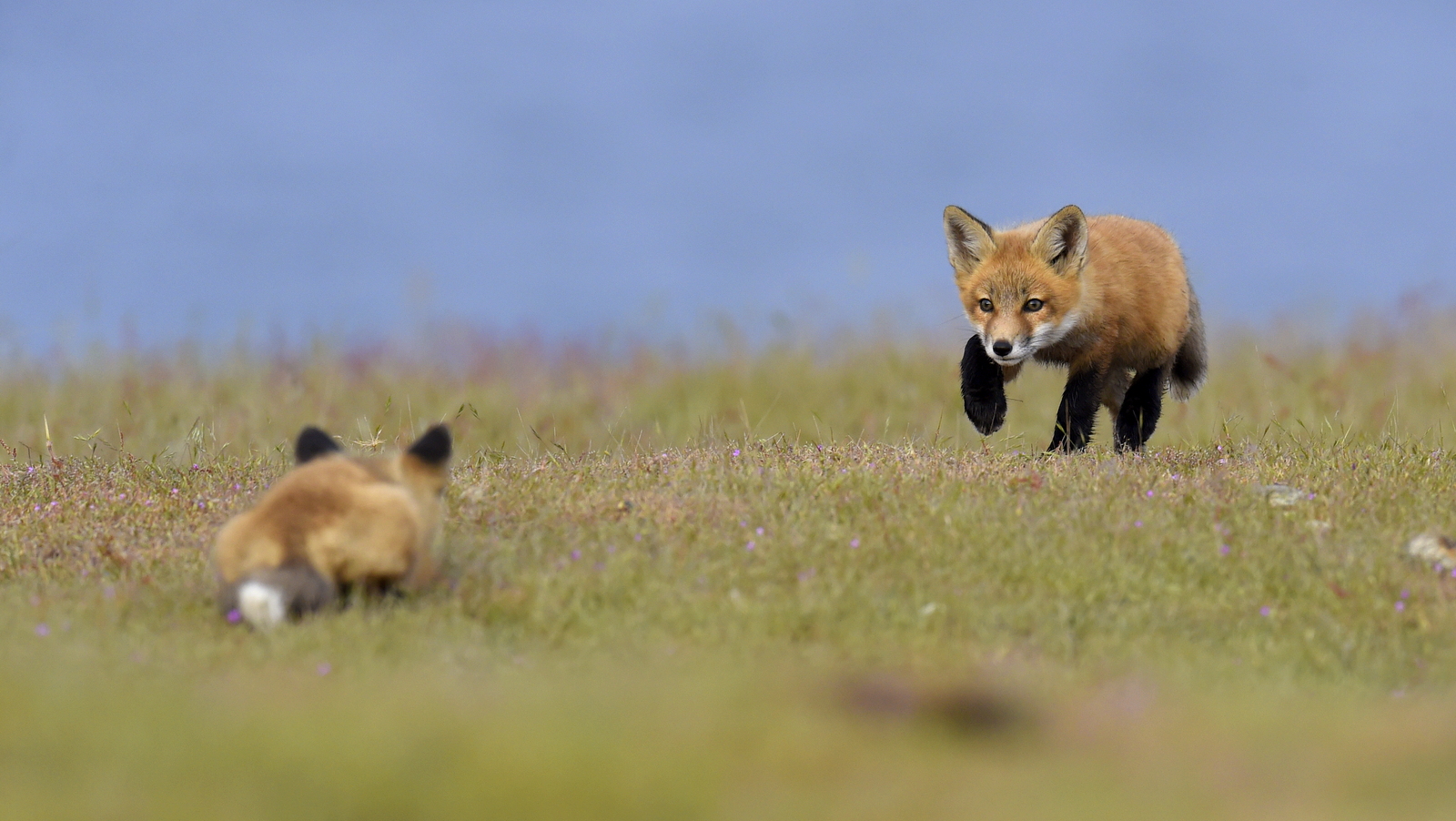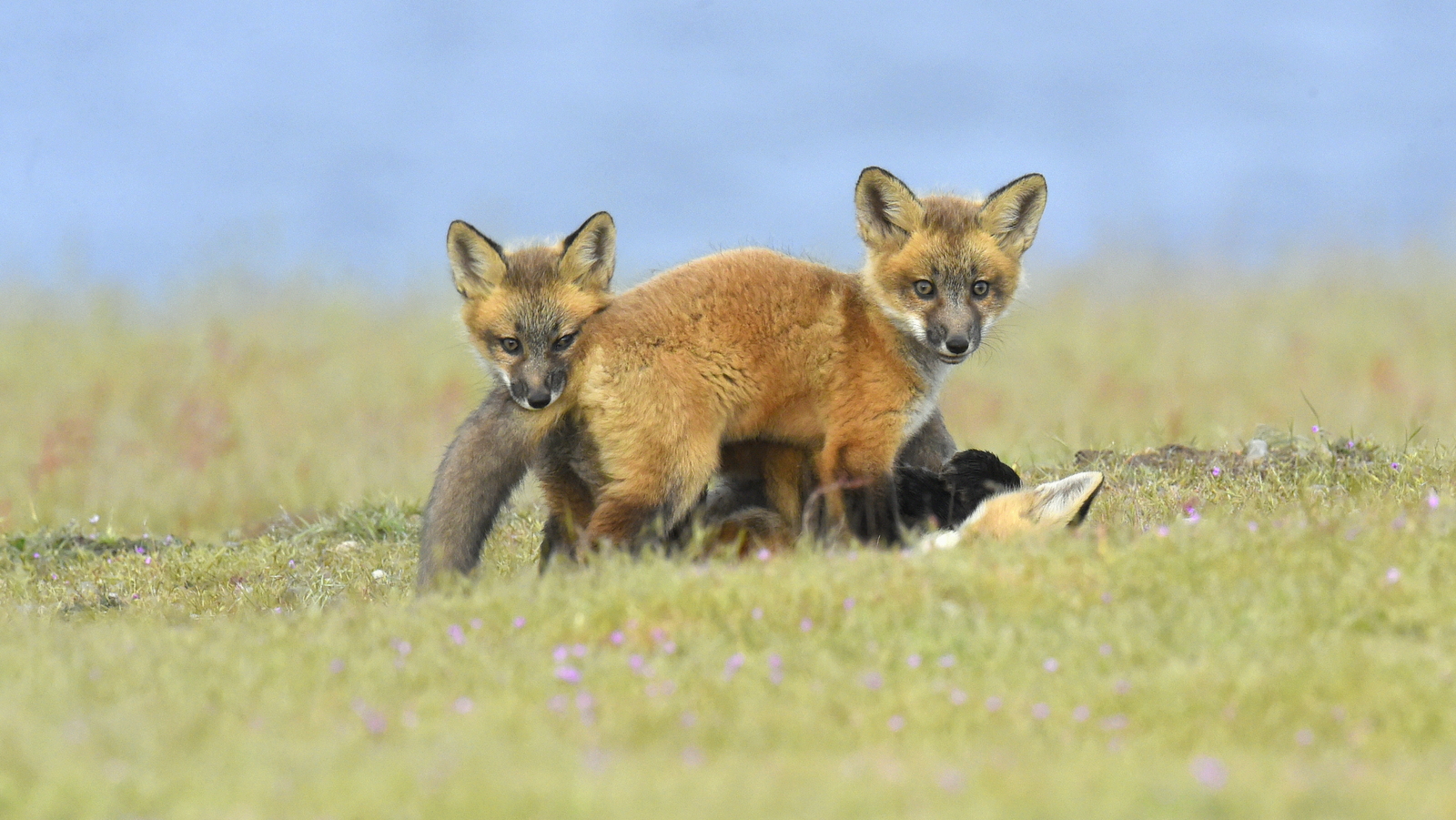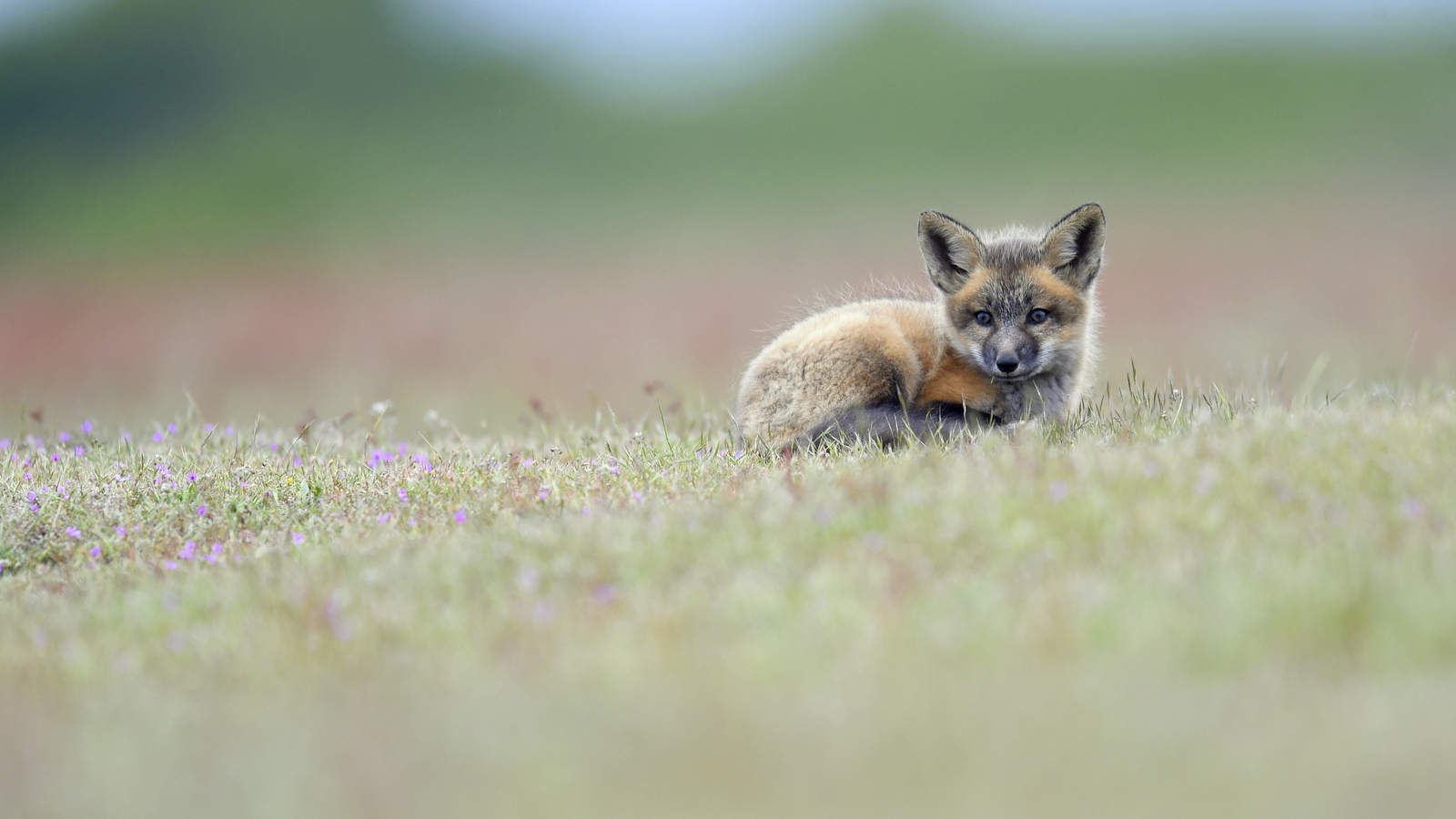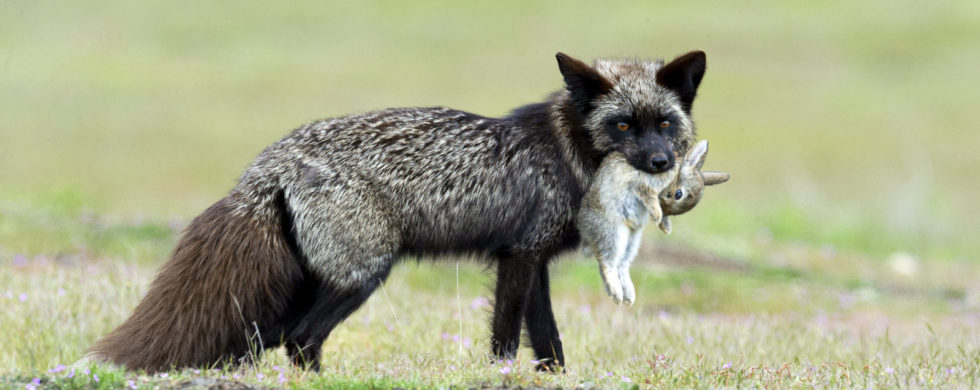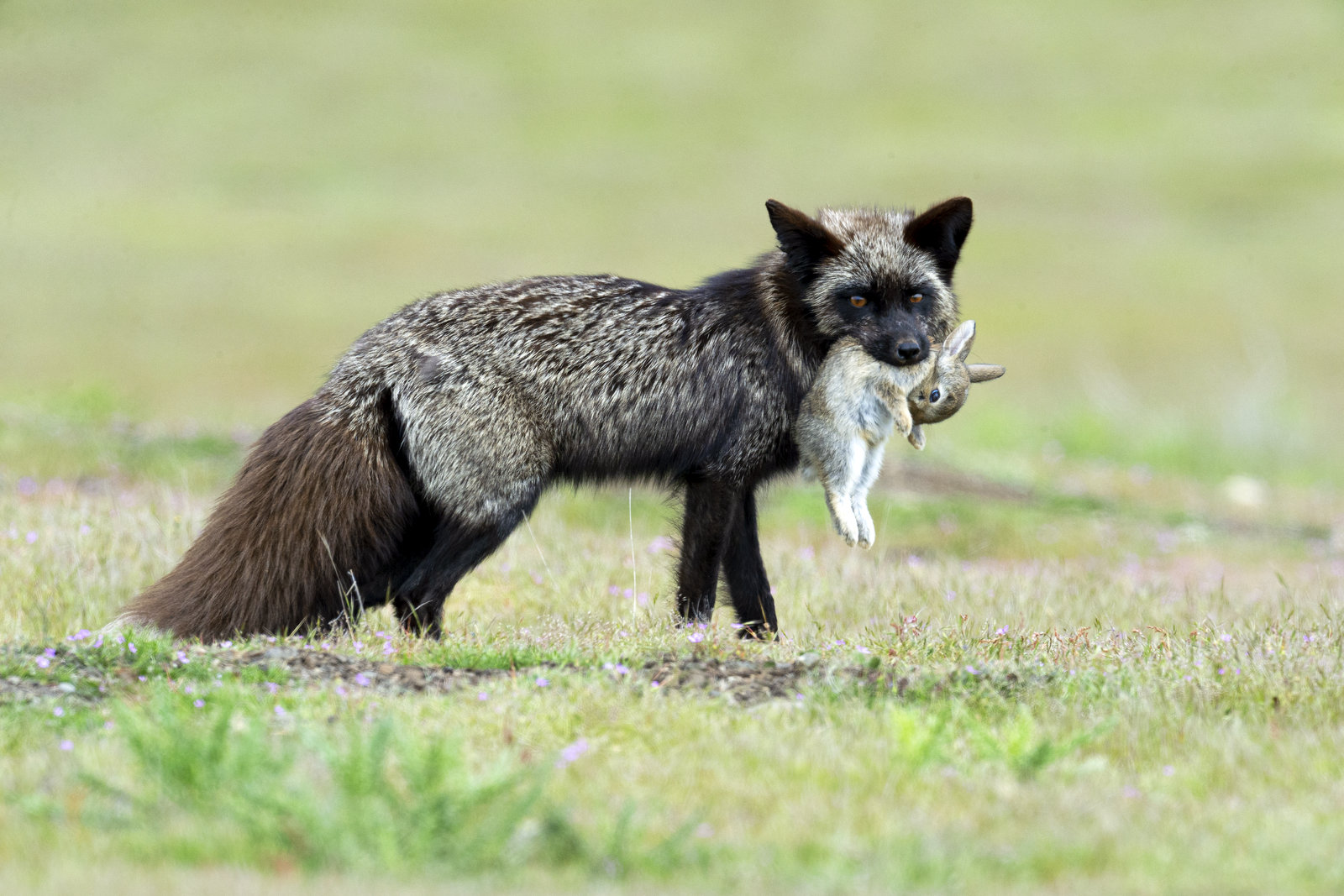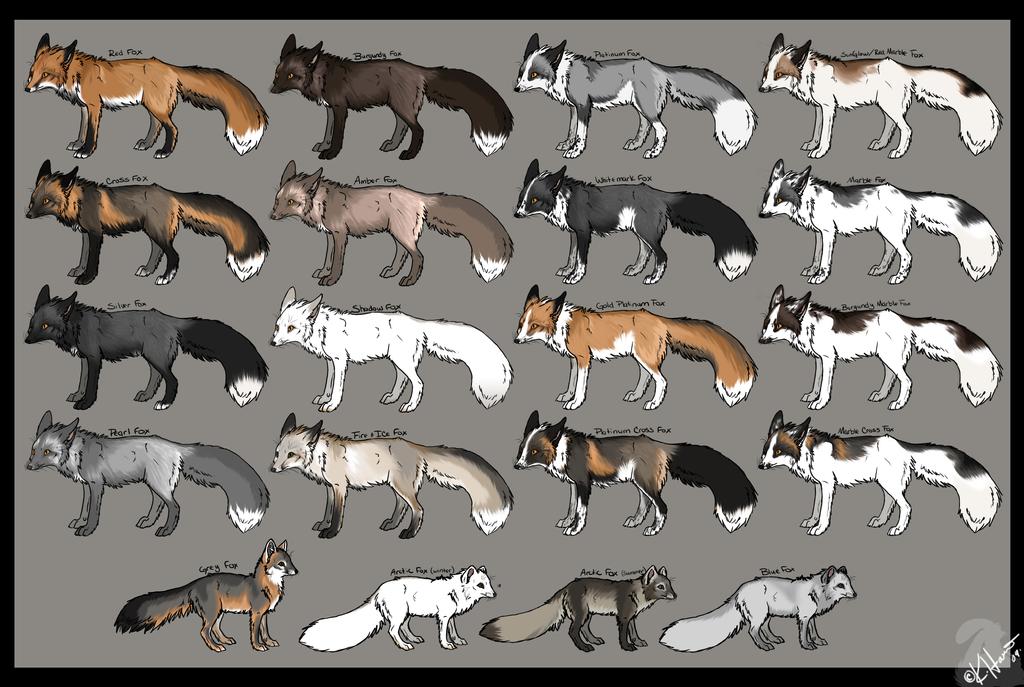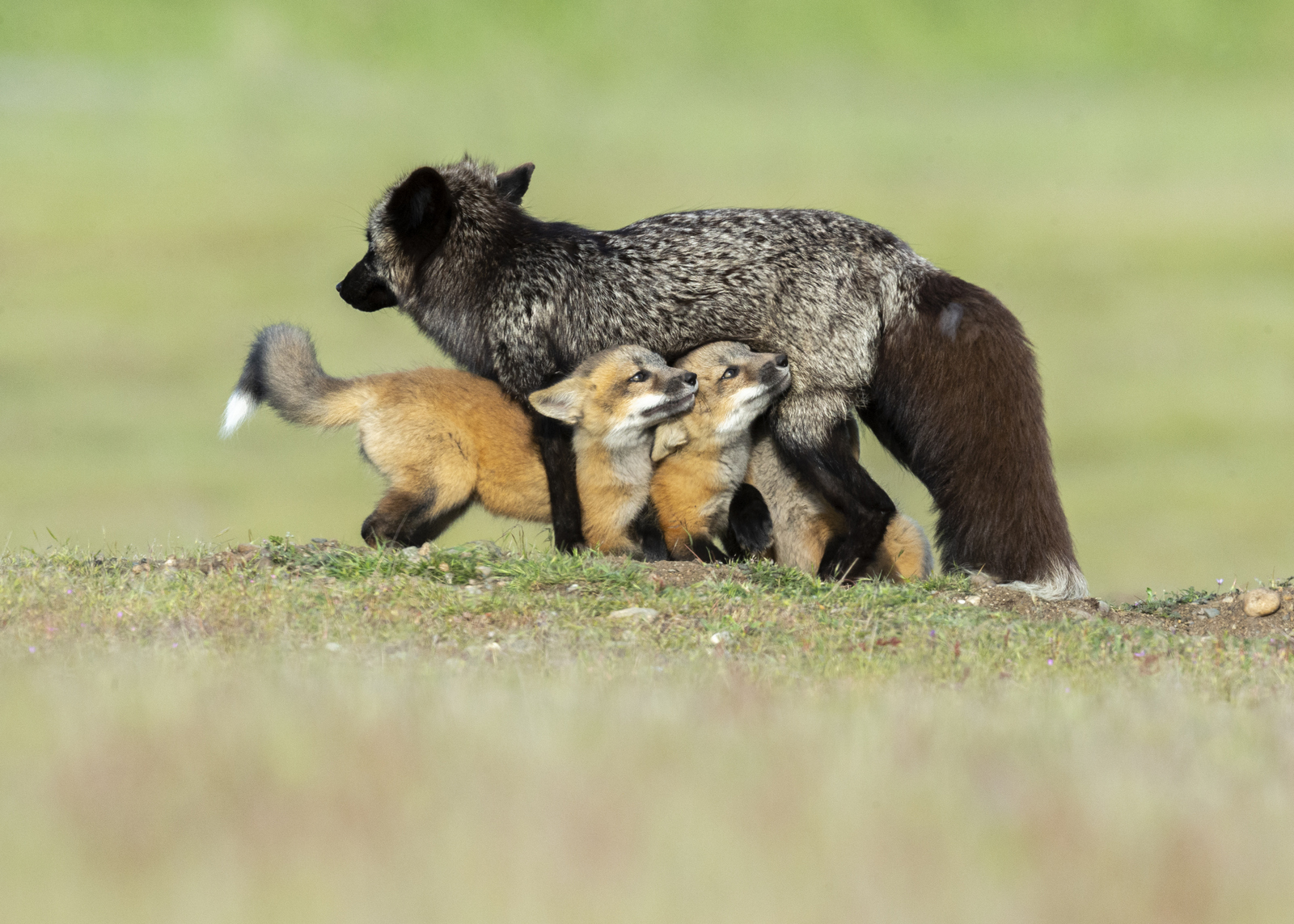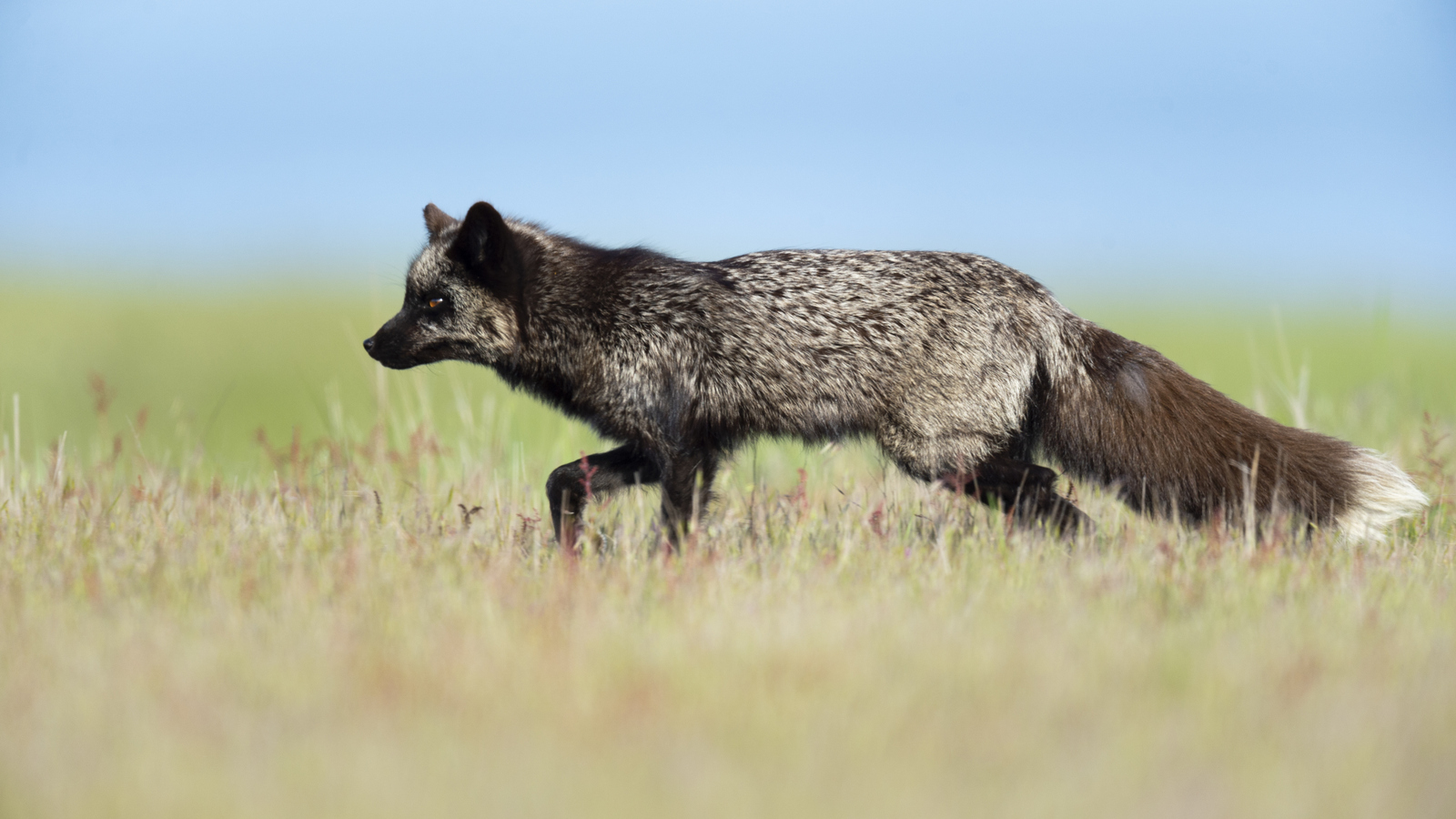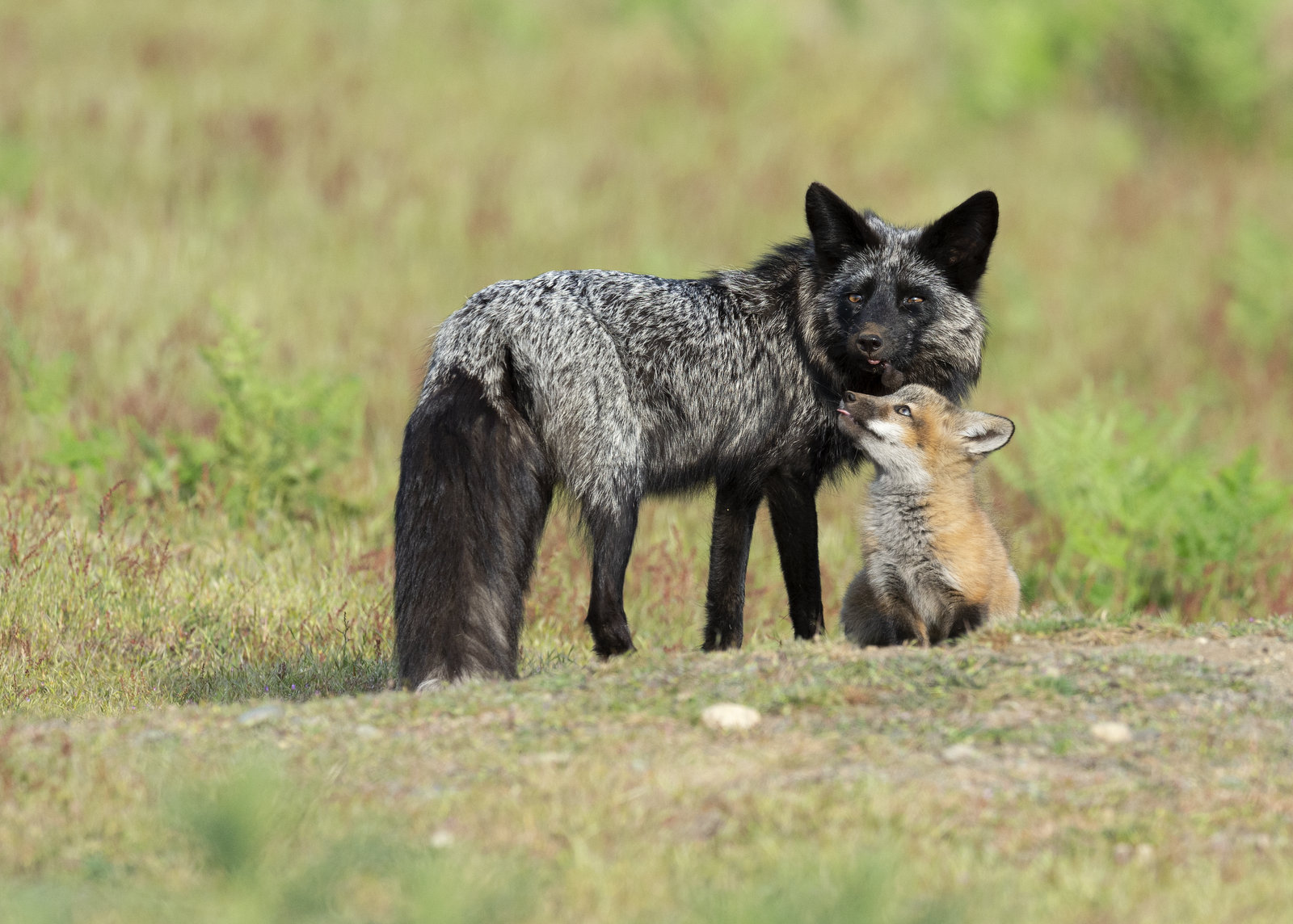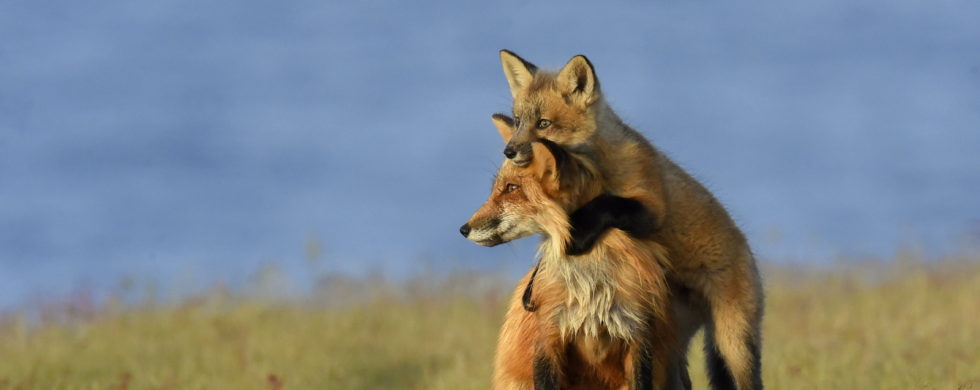Shot of the Month – February 2020
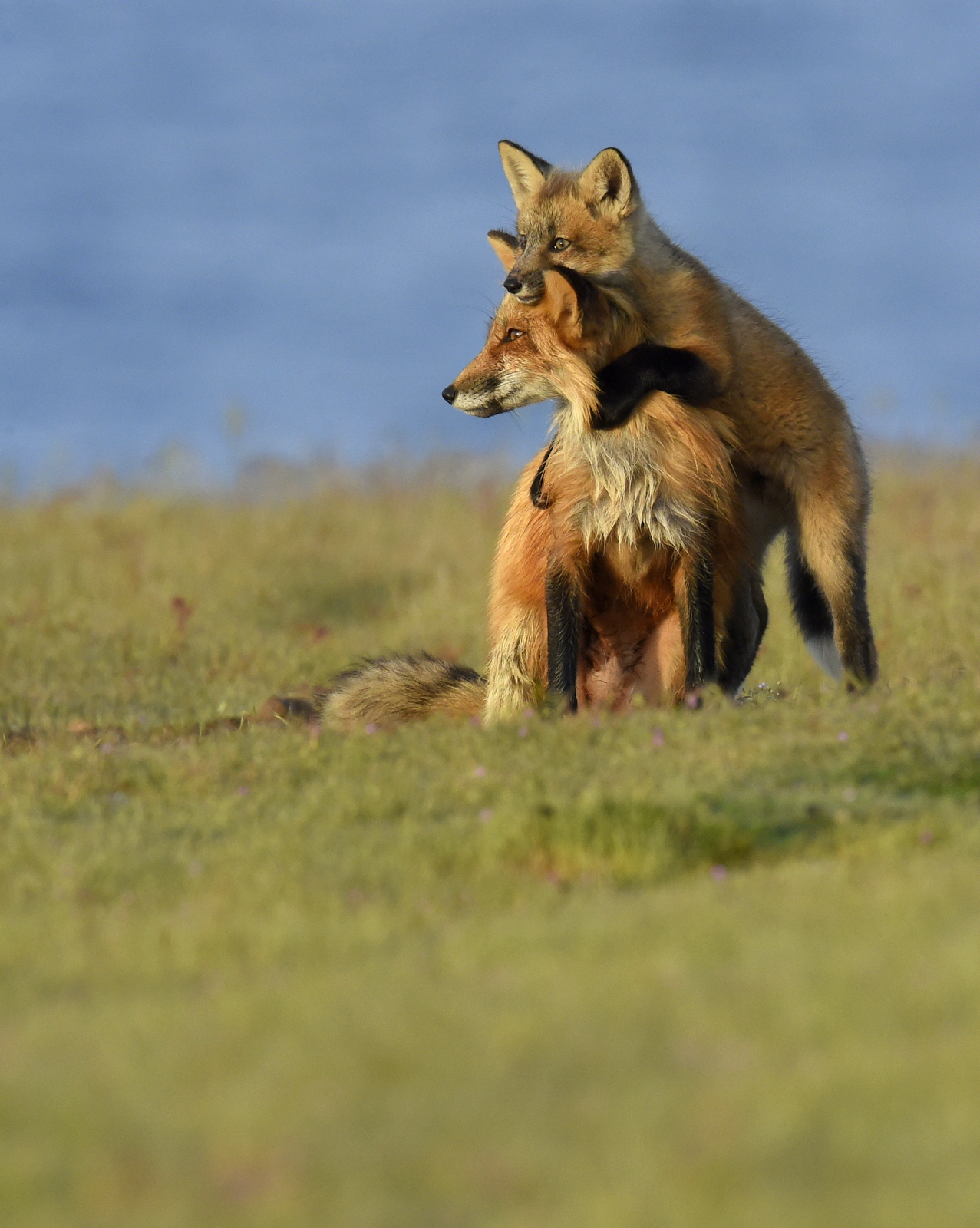
This month an installment from the “Awwwwl Collection.” In this image I captured an adorable Maternal Mammal Moment (MMM) — a mother Red Fox (RF) with one of her kits as they look into the warm light of the morning sun. Mom is actually looking at rabbits off in the distance and the kit is, well, just being a goofball.
If you spend much time in nature you are going to see a red fox or twenty. The wily Red Fox is a survivor and exceptionally  skilled at adapting to almost any environment. How successful? The RF is the most wide-spread carnivore in the world and she can be found across the entire Northern Hemisphere including most of North America (except southwestern US and Mexico) Europe, Asia and parts of Northern Africa. Red Foxes were introduced into Australia which has caused all sorts of problems…sigh. Humans….
skilled at adapting to almost any environment. How successful? The RF is the most wide-spread carnivore in the world and she can be found across the entire Northern Hemisphere including most of North America (except southwestern US and Mexico) Europe, Asia and parts of Northern Africa. Red Foxes were introduced into Australia which has caused all sorts of problems…sigh. Humans….
Foxes are the smaller members of the dog family (Canidae) but you can clearly see their kinship with jackals, wolves and other other dogs. There are about 30 species of foxes though only 12 of these, in the “vulpus” genus, are considered “true foxes.” Of this group of diminutive dogs the RF is the largest and most common of the group.
Is that like being a jumbo shrimp?
The Red Fox is about the size of a medium size dog and typically weighs around 25 pounds. For comparison the dessert dwelling fennec fox is about the size of a chihuahua and the arctic fox only weighs about seven pounds and most of that is fur!
Although RFs are listed as a carnivore they are really omnivores and can eat just about anything. Red Foxes feed primarily on small rodents (mice, rats, voles, squirrels, woodchucks, pocket gophers, deer mice) though they will also hunt rabbits, game birds, reptiles and other small animals. They will also eat fruit, bugs, worms, vegetables and if they live near the ocean they dine on fish and crabs. As you can see their diet can vary widely depending on what is available. In some areas, in the autumn RFs will dine exclusively on fruit including blueberries, blackberries, raspberries, cherries, persimmons, mulberries, apples, plums, grapes and acorns. They will also munch on grasses, sedges, and tubers. Whew, who’s hungry??
The family/social life of the Red Fox is also quite varied and hard to fit into any one category. Foxes are definitely less “pack” oriented than wolves and other dogs. RF’s may live in small groups of related individuals or may live on their own depending on their environment and temperament. I feel ya. Foxes are solitary hunters and only dominant females will give birth to kits. Foxes form monogamous life pairs with their mates. Alas these life pairings are rather short – the life expectancy for foxes, for some unknown reason, is only about 4 years in the wild!
For those playing at home:
Male Fox = Reynard
Female Fox = Vixen
Young Fox = Kit
A group of Foxes = Skulk, Earth, Leash
Us humans have a complicated relationship with foxes. On the one hand our mythologies and folklore are full of tales of the wiley fox and their supernatural powers. I wrote about some of these tales here. On the other hand foxes are considered pests and killed at every other opportunity in many countries. Germany kills about half a million foxes each year, while England kills about 25,000 annually to highlight a few kill zones. And let’s not forget the whole fox hunting controversy in England. The fur of Red Foxes is one of the mostly highly sought after and results in fox farms with millions of foxes suffering in cages under terrible conditions. Wild foxes are likewise trapped for the fur trade and suffer painful deaths for fashion.

A Lovely Family Moment
Despite this onslaught Red Foxes continue to thrive and even expand their range. The crafty creature has learned how to live in cities and now populates many an urban landscape – it is estimated that 10,000 Red Foxes now live in London alone.
Stick it to the Man. Well done, mate.
Until next month….m
A few other images from the “Awwwwl collection”:
Hyrax Huddle
Burrowing Awwwwl
Waiting for a Ride
Disappearing Pika
Great Horned Owl
It Takes a Village
They Grow Up So Fast
Nikon D4S, Nikon 600mm, 1.4x TC (effective 850mm), f/11, 1/1000 sec, ISO 2500
Sources:
Animal Fact Encyclopedia
Live Science
National Geographic
Wikipedia (Red Fox)

